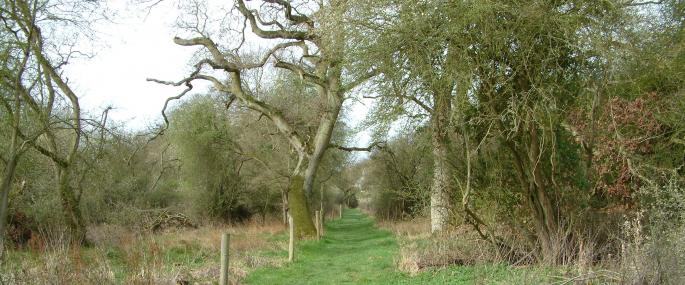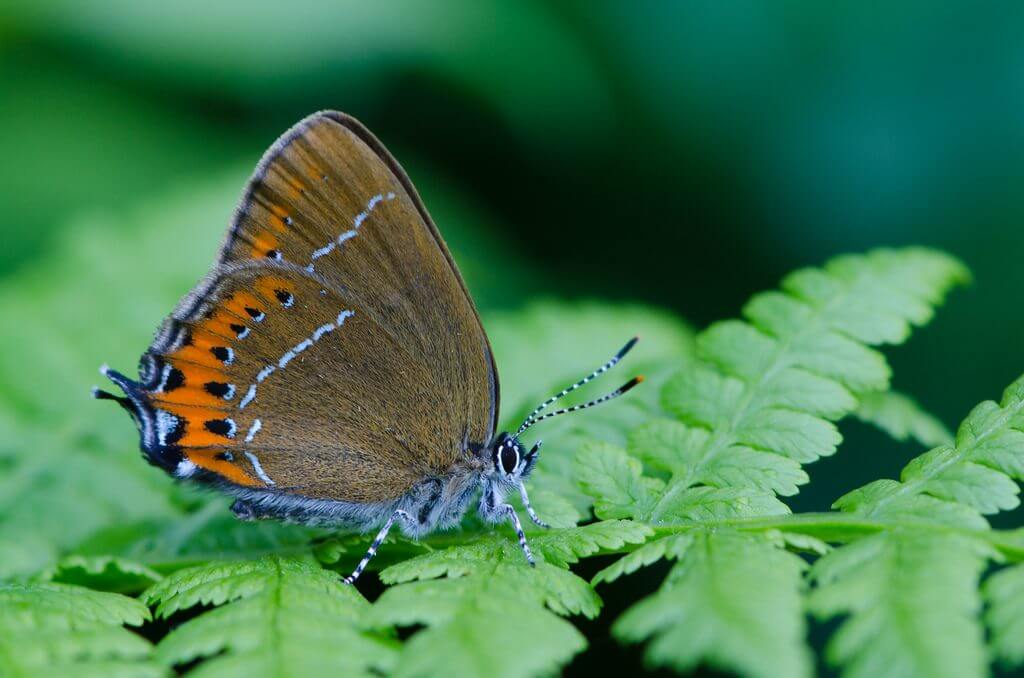Tim writes: the Black Hairstreak is undoubtedly Britain’s rarest hairstreak, being restricted to a narrow band of ancient woodlands between Oxford and Peterborough. They are also frustratingly difficult to predict their appearance as it varies between early and late June. They also seem to get worn and tatty rather quickly so photographing them soon after they appear is important if you want them in good condition. The caterpillars feed on Blackthorn but the adults nectar mainly on Bramble, Privet, Dog Rose and aphid honeydew on leaves. They share with Green and White-letter an annoying hairstreak habit of never resting with wings open. The row of black dots inside the orange hindwing band is a diagnostic character to distinguish them from the closely-related and similar White-letter Hairstreak. This was photographed in the woodlands in the Bernwood complex just north of Oxford.
Taken with a Nikon D7000 and a 105mm Nikkor macro lens 1/50 f8 ISO 800
Mark writes: a local speciality for me – I try to see them every year in the Beds, Cambs and Northants WT reserve of Glapthorn Cow Pasture.
In the image below, there are several places where I have seen this little butterfly (including behind me) but the main spot is half way down this path and then turn right and look at the brambly bushes (Dewberry, I am told) up the path.
This butterfly seems very poor at nipping over open ground and establishing itself in new woods. It makes you wonder how it ever managed to spread in the first place. And it also means that every surviving site is vitally important.

[registration_form]

I’d guess it spread partly because of large areas of coppiced woodland.
“This butterfly seems very poor at nipping over open ground and establishing itself in new woods. It makes you wonder how it ever managed to spread in the first place. ” One reads so often of this inability to spread in the description of different butterflies, they do not hop over hedges or open land etc. Yes I agree “every surviving site is vitally important.” but it is surely even more vitally important that we do more breeding and (re)introduction as these populations could blink out for some reason: climatic etc. With modern spraying with less drift and the establishment of nectar margins etc things have changed again and species may survive in habitats but not get to them. Networks of habitats are fine but will they ever be established. Helping butterflies jump the gaps we have created is surely worth a try. Not just with the iconic species but commoner ones such as the marbled white which could be helped to spread. Many people who have bought their own piece of pasture isolated in an arable desert who would surely pay for a stock. If Butterfly conservationists worry about certain aspects they should help organise the supply.
Black Hairstreak is one of those little oddities. Large areas of apparently suitable habitat exist within the woods it inhabits, and in the adjacent areas, unused by the butterfly, whilst other bits are their favourites.
There is plenty of scope for colonisation in the Huntingdon/Peterborough end of its range it it chose to move but it doesn’t. THATs the conservation dilemma. If we can work it out, Sorted!
Louise
Louise: Has anyone tried to introduce the butterflies to these other areas? As I understand it Red Kites only spread slowly as the juveniles like to breed as close to where they were brought up as possible, they succeeded there so their offspring should. Butterflies know where they are, Red Admirals set up territories in glades along our lane, a tatty Silver Washed Fritillary included our garden in its patrol for a number of days. Brimstones reputed wanderers seems to patrol a large area for a time.
If clipped specimens were released in other areas in the woods and gravitated to the favorite areas this would be more definitive, that these were somehow desirable and not just a stay at home gene at work.